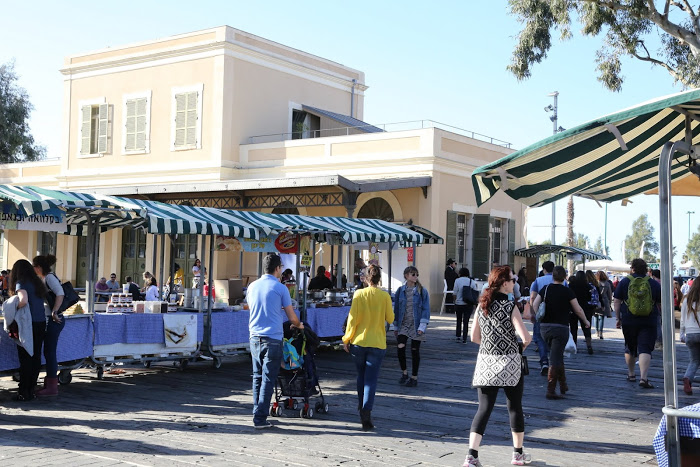A train station on the Jaffa-Jerusalem line, located between the sea shore and the Neveh Zedek neighborhood, operated from 1892 to 1948. This was the first railway line between Little Asia and Egypt and the first means of transportation to replace the camel as the mode of transport for heavy loads taken over long distances.
The idea to establish this railway was first proposed in the 1830’s by Moshe Montefiore, who was interested in developing modern industry in the Land of Israel, but ran into difficulties in relation to the transport of machinery and raw materials.
At the end of a long process that entailed a combination of entrepreneurship, vision and international politics, in 1888 Turkish Sultan Abed el-Hamid granted the license to Yossef Navon, who was able to raise the necessary capital from Europe in order to to lay the tracks and build the stations.
It took two years to execute the immense railway construction project, and its completion heralded the beginning of the age of modern transportation in the Land of Israel.
In 1900, Templar Hugo Wieland returned from Germany to the Land of Israel moved to his home near the train station, building his tile and brick factory alongside. This proximity to the railway allowed Wieland to transport his products efficiently to the Jaffa Port, where they were loaded onto ships and sent overseas.
The number if passengers increased over the years and in 1913, on the eve of WWI, some 183,000 passengers journeyed through the station. The Jaffa station operated on a regular basis almost to the eve of the War of Independence in 1948.
Three-dimensional guest performance
Visitors are invited to join the station and enjoy the performance reviews – educational – a new humorous station compound. Ido Musari, actor, go with time travel station on a special video produced for the exhibit, The story goes back more than 100 years. Exhibit three-dimensional video, Hlogrmh and simulation effects, lighting and sound. An experience that suits the entire family, children and adults who do not want to grow up!
The old car in recent months through a process of careful preservation, and was designed in the authentic spirit of the car. Drive is an elegant first-class carriage in which were designed wooden floor and shell, upholstered benches, decorative copper-colored metal and more. It feels like a real journey takes place in the last century.
Threaded video clips, humor, travel to historical figures and symbolism through which untold story of the first railroad line that operated in Israel between Tel Aviv and Jerusalem and the story of the period. Do not miss the train!




